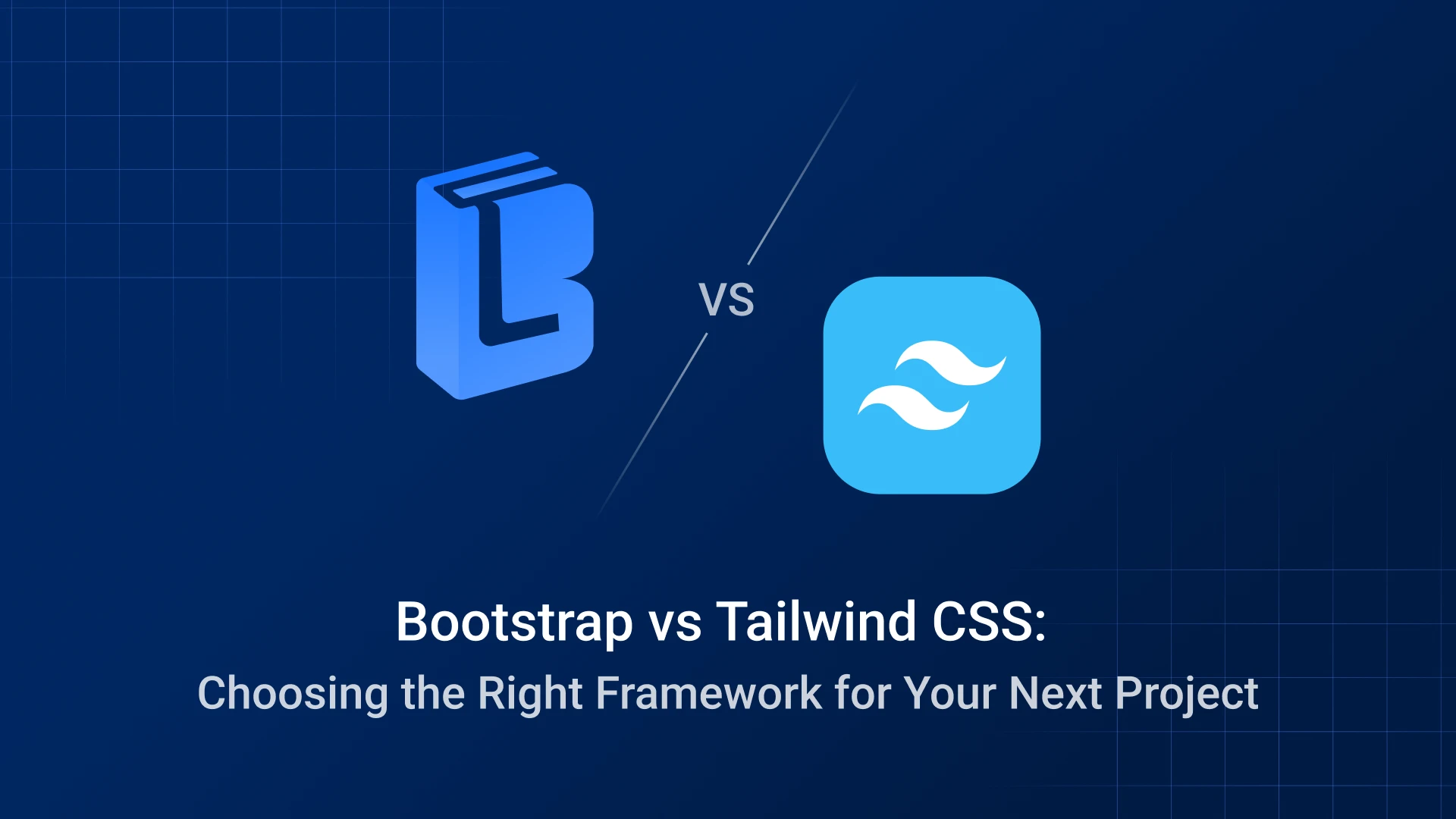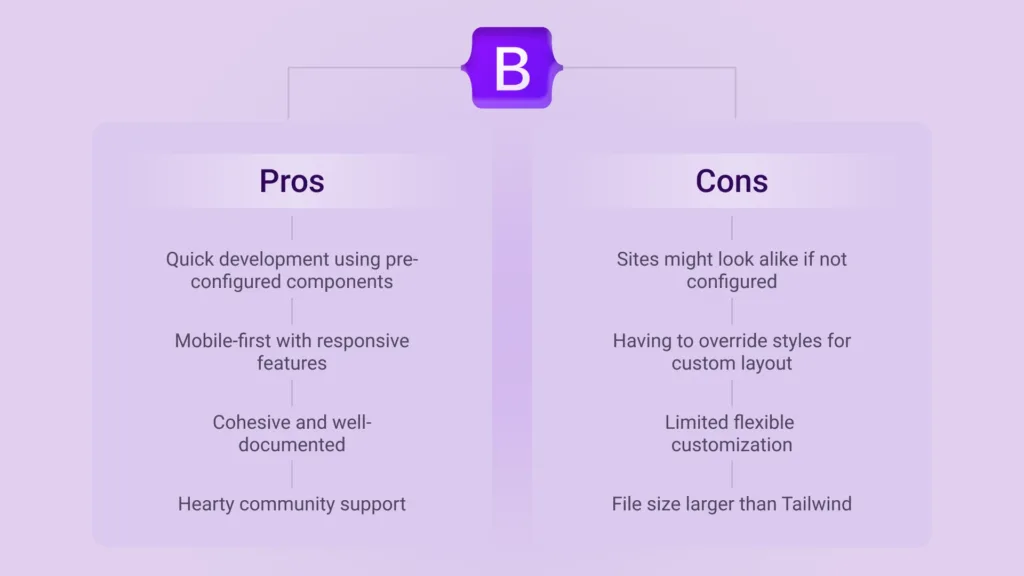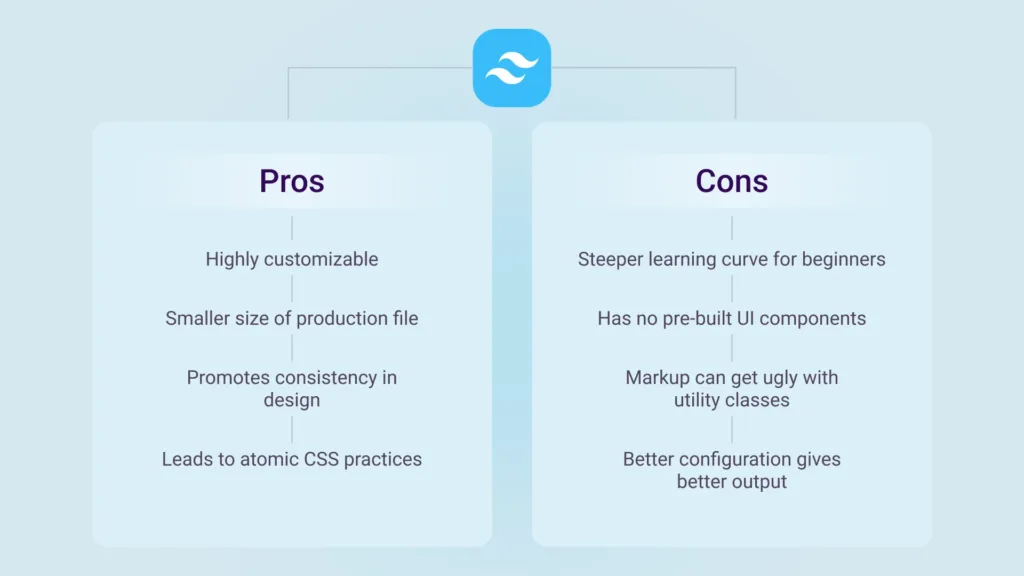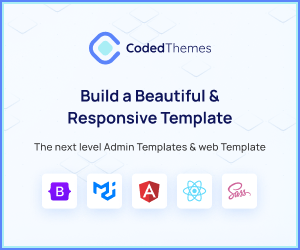
These CSS frameworks can speed up the time and effort it takes to build elegant responsive websites. They come preloaded with ready-to-use codes, components, and utilities that help developers not reinvent their wheel. Bootstrap and Tailwind CSS are leading frameworks in the field. But Bootstrap vs Tailwind CSS, which is better? Let’s dive deeper into these two offerings to inform you about your choice.
What is Bootstrap?
A development started from Twitter for a front-end framework that is a one-time toolbox with all needed ready-to-use components such as menus, buttons, forms, modals, and carousels. It comes with a layout system based on a grid and offers JavaScript plugins to make things interactive, so it can be considered the quickest front-end UI development tool.
When to Use Bootstrap?
Bootstrap is best for:
- You need a ready-to-use UI with minimal configuration.
- You are working on an MVP or prototype that needs to be developed quickly.
- You are a beginner looking for a well-documented and community-supported framework.
- You want a design system that looks great out of the box.
- You are working in a team with mixed levels of front-end experience.
For example, you may use Bootstrap when creating an admin dashboard, backend for e-commerce, or a corporate intranet portal to get up and running quickly using the power of components-rich setup Bootstrap houses.
Benefits of Bootstrap
- Quick Development: Allows you to quickly design web sites using prebuilt UI components such as buttons, forms, and dialogs.
- Mobile-First: Uses a responsive grid system tailored for all screen sizes.
- Consistent Design: Uniform style and design across pages and elements.
- Cross-Browser Compatible: Requires few fixes and works like a charm on all modern browsers.
- Extensive Docs: Well-documented, with a lot of code examples for easy comprehension.
- Strong Community: By a large community, with plenty of resources and help.
- JS Plugin Included: Contains jQuery components for extra interactivity.
- Customizable with Sass: Sass variables are supported for simple theme customization.
Pros and Cons of Bootstrap

What is Tailwind CSS?
Tailwind CSS is a utility-first CSS framework through which one can make custom design directly into HTML. Bootstrap, on the other hand, has pre-built components, unlike Tailwind, which uses low-level utility classes that allow full control over how to make your UI look.
When to Use Tailwind CSS?
Tailwind CSS is best used if:
- You want to create designs from scratch without conforming to any predefined styles.
- You’re designing a layout defining a unique UI for a specific brand.
- You plan to trim away unused styles for production to minimize the bloated CSS.
- You’re comfortable working your markup to style components.
- Your team is familiar with CSS concepts and always leans towards flexible use and greater availability of styles than those pre-packaged.
Tailwind is a great choice for customized landing pages, and the UI was created for SaaS applications, such as blogs or even marketing sites that need special design and performance compared to others.
Benefits of Tailwind CSS
- Highly customisable: Tailwind makes the customization of colors, fonts, spacing, etc., easy for your design system.
- Responsive utilities: Tailwind has responsive modifiers baked into class names, so you can build mobile-friendly designs when you need them.
- Optimized for performance: Tiny final CSS files combined with tools like PurgeCSS.
- Consistency in design: Standardisation of values by utility classes encourages consistency across your application.
Pros and Cons of Tailwind CSS

Bootstrap vs Tailwind CSS: Which is Better?
Each has its pros and cons when it comes to Tailwind CSS vs Bootstrap; the choice depends on the types of requirements defined for the project, the individual preference of the team, and long-term goals. Let’s take a detailed look:
Comparison Table: Bootstrap vs Tailwind CSS
Feature | Bootstrap | Tailwind CSS |
Design Approach | Component-based | Prioritizes utility |
Learning Curve | Beginner friendly | Steeper, especially for new developers |
Customisation | Needs to be overridden by default styles | Configurationally highly customizable |
Out-of-the-Box Components | Has a lot of pre-composed components | None by default (but you can use libraries) |
File Size | Big (JS components included) | Small (especially with purge) |
Performance Optimisation | Less optimized by default | PurgeCSS makes it really efficient |
Community & Ecosystem | Huge-mature ecosystem | Rapidly growing with lots of backing |
Ideal Use Case | Quick prototypes, admin dashboards | Custom UI, production web apps |
Bootstrap would be quicker if your project is focused on fast delivery and works less on design consideration. If, on the other hand, you want pixel-perfect control for the layout along with lighter UI architecture, consider the option of Tailwind.
Conclusion
So, Bootstrap vs. Tailwind CSS: which one is better? The answer depends on what you want to do with it. Bootstrap is likely more appropriate if you want a beautiful UI with minimal effort designed and developed quickly. Still, more advanced performance and highly customized design with extreme control is where Tailwind CSS becomes handy.
Other considerations would be team experience, scalability into the future, and of course, whether you want faster development over retaining a little creative freedom. Tailwind lets you build your components, giving designers more chances to customize while allowing faster sites. In contrast, Bootstrap is a reliable framework with beautiful UI components that you can use.
Ultimately, both frameworks fit into the picture of modern front-end development. The best thing will be to try both—work on a few projects with either and let your team select the one that fits best with their design workflow and project demands.
Frequently Asked Questions
1. Is Tailwind lighter than Bootstrap?
Yes, unneeded classes can make Tailwind CSS a lightweight tool in production. On the contrary, Bootstrap contains many CSS and JavaScript components that could potentially increase the size of its files.
2. Is Bootstrap better than Tailwind?
It depends on the scenario. Bootstrap is better for rapid deployment and system uniformity; Tailwind is better for a fully scoped and scalable user interface.
3. Can you use Tailwind and Bootstrap together?
Theoretically, yes, you can use both. However, one may have conflicting styles and huge CSS files following both approaches. Therefore, one framework should generally be used for consistency.



Leave a Reply